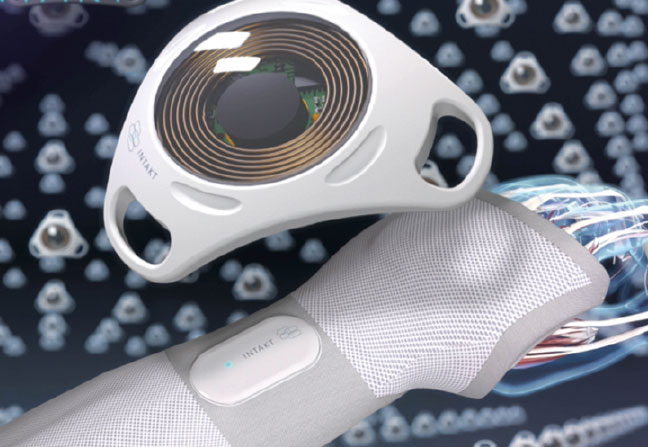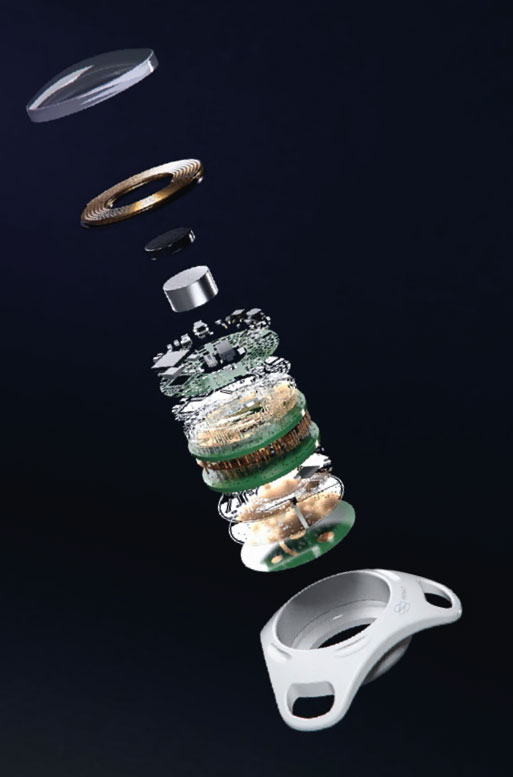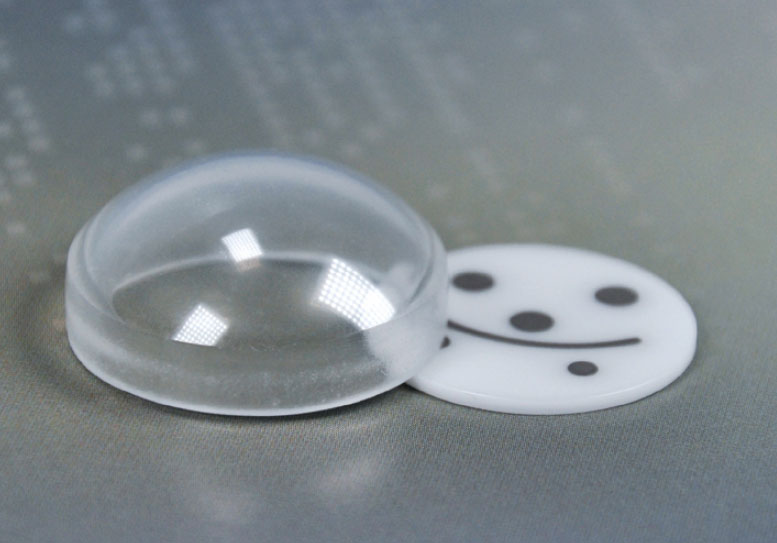
Implant housing with optical window made of transparent ceramics
Current research

Within the INTAKT innovation cluster, partners from industry, science and medicine have worked on a unique research project with a focus on the therapeutic use of interactive micro-implants. Under the leadership of Fraunhofer IBMT, 18 partners have been working on the development of new digital medical products designed to provide the most beneficial solution to patients by establishing new technologies which ensure reliable, life-long use of implants. Three applications were addressed: tinnitus suppression, the restoration of grasping functions and the treatment of gastrointestinal dysfunctions.
The aim of the INTAKT research project was to develop a completely new generation of actively networked micro-implants which can provide forward-looking approaches for improved human-technology interaction. Networked single implants (image 1) communicate with the doctor or patient via external interfaces. In the future, such direct communication will allow physicians to obtain data-secure access to relevant information and to optimally tailor treatment to the patient by externally controlling parameters and stimulation modes.
With the acquisition of the transparent ceramics division of CeramTec-ETEC in April 2021, IKTS has continued the work in the sub-project addressing gastrointestinal dysfunctions.
The task was to develop a rigid and hermetically sealed ceramic housing with sufficient break resistance and an optical window. For this purpose, the researchers selected the transparent ceramic magnesium-aluminum spinel. The requirements for the ceramic were biocompatibility, transparency in the IR range (λ = 1.07 μm) and sufficient fracture strength.
An optical window was incorporated to enable signal transmission. Two shaping technologies were tested: slip casting and manufacturing through hard machining from solid material.
CeramTec-ETEC produced first-generation housing demonstrators made of PERLUCOR® through hard machining from solid material. Fraunhofer IKTS produced the casing lid demonstrator through slip casting and thus also evaluated this technology for a monolithic casing lid. Once the final design was available, a further small series of the second-generation monolithic casing lids could be produced from spinel ceramic (image 2). Initial in-vitro tests with assembled implants (image 3) returned promising results. The sensor structure, the support plate and the power supply were developed by project partners. The Fraunhofer IKTS working group is certified for medical products according to ISO 13485, enabling further improved development and manufacturing of the prototype.
The 5-year project is initiated and funded by the German Federal Ministry of Education and Research (BMBF) within the research program “Bringing Technology to the People” under the project number FKZ 16SV7652.
Sponsored by



